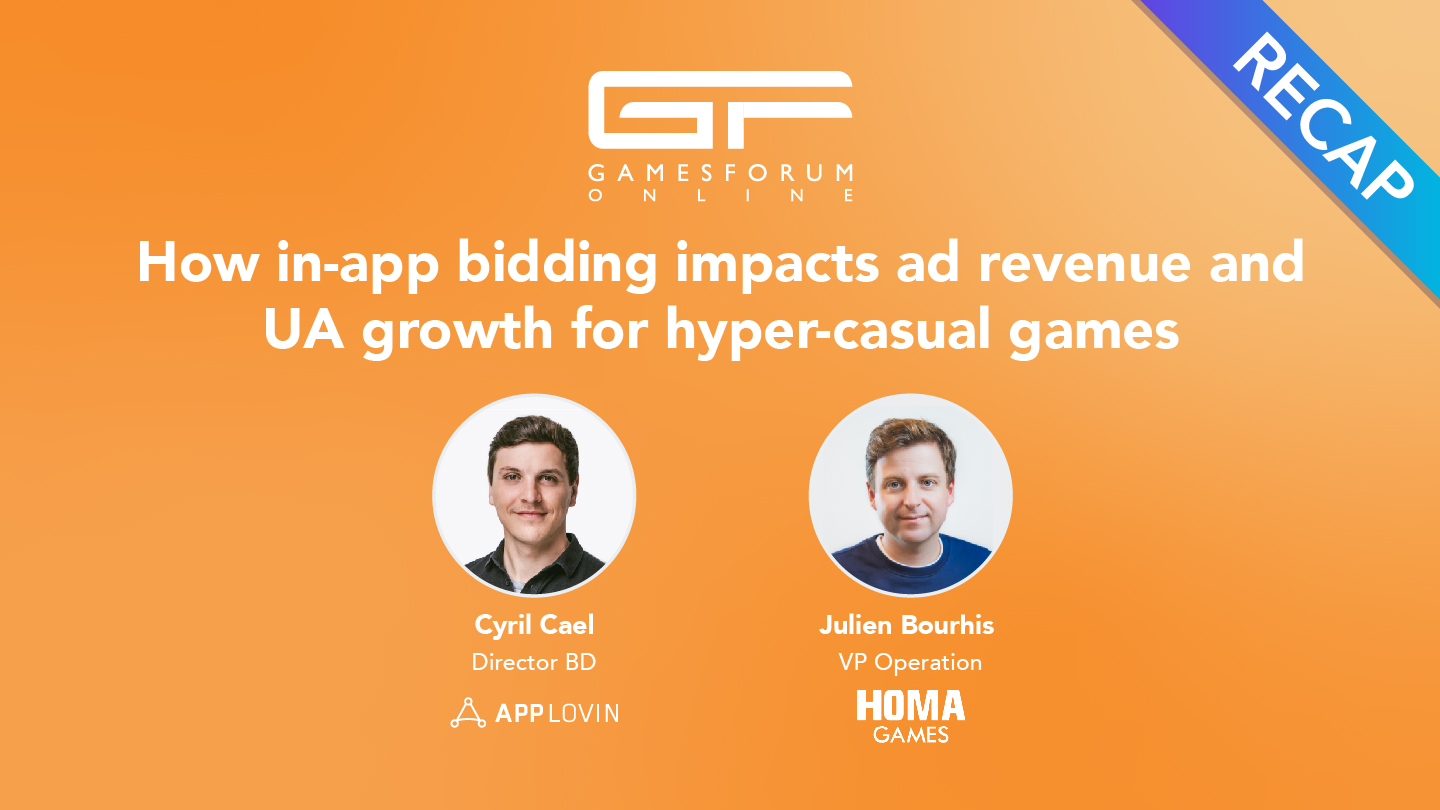In-app Bidding, Monetization
How In-App Bidding Helps Homa Games Grow UA and Ad Revenue for Hyper-Casual Games
Feb 9, 2021

In-app Bidding, Monetization

Hyper-casual—it’s the business model that can be used to create and define simple gameplay. But what does it take to monetize hyper-casual games in a competitive environment? How do you drive profitability through ads?
These questions were just a few that were addressed in a recent episode of the Gamesforum Online Weekly Webinar. AppLovin’s Director of Business Development, Cyril Caël, and VP of Operations at Homa Games, Julien Bourhis discussed how in-app bidding and automation impact ad revenue and growth for hyper-casual games.
Both Cyril and Julien agree that hyper-casual is more of a business model than a game genre. We can define hyper-casual games as:
Other key elements include short production cycles, which means studios can launch games in less than a month.
When it comes to user acquisition or UA, Cyril explained, “The retention will be high on the first few days, but then it drops off quickly after that. There are very short profitability goals, with low loyalty.”
Julien added that hyper-casual games generally have five to 12 impressions per 10 minutes of gameplay and are very much data-driven. “Ad pressure is much higher than casual games. These games rely on 90 to 95 percent of its revenue from ad monetization.”
Based in Paris, Homa Games has published 30 games which drove 300 million total downloads. Their hit games include Nerf Epic Pranks!, Sky Roller, and Idle World. The studio moves quickly to produce games—with Julien noting they can make a game in just three weeks.
Traditionally, ad monetization has used a waterfall, which required developers to manually set estimated CPM (cost per mille) price points. It’s referred to as a waterfall because the inventory cascades down until a network agrees to pay for it at that specific price point. This was a tedious process that took a lot of time and effort. When you’re trying to move quickly to produce games and scale your business, managing a manual waterfall isn’t the best use of your time.
In-app bidding, on the other hand, is based on unbiased auctions that take place outside of the waterfall. Buyers bid simultaneously on each impression and the one with the highest bid wins. MAX, which is AppLovin’s in-app bidding solution, helps developers like Homa Games make more money and save time through automated bidding.
Using a data-driven approach to understand UA can help developers and studios make better decisions. At Homa Games, Julien says they have three mediation partners and about 10 to 15 ad networks. They use an internal data stack to process the data from their partners and leverage their internal UA tool to pull information related to LTV, or lifetime value.
This helps calculate the projected bid to run different campaigns. They also run lots of A/B tests in order to maximize LTV and retention to yield higher revenue. This is done with just a few clicks. “We run analysis frequently to really understand the value of each ad impression, make a bridge between ad monetization and user experience by finding the best implementation to minimize the user friction.”
Cyril believes that the ultimate goal should be to maximize your ARPDAU (average revenue per daily active user), which allows you to bid more aggressively on the UA side. The aggregated view of user-level data helps you understand the value of each ad impression so you can make the most from your game.”
Julien noted that the benefits of a UA automation tool like AppLovin’s AppDiscovery. “It reduces a large amount of manual work for me and enables us to launch and adjust the budget of our campaigns. It also helps us upload the creatives for our campaign.”
He also said automation allowed the team to test hundreds of games on a quarterly basis. “Imagining having to manually manage each campaign. That would be a headache, so optimizing all of them across your game with automation is extremely important.”
Julien and Cyril emphasized the importance of having this data-driven approach with an analytical mindset. Their advice is to leverage the right tools to grow your automation on both UA and monetization side. Always stay curious about what’s happening in the market and be able to adapt quickly.
Curious about MAX and AppDiscovery? Learn why they’re the secret weapon for developers and studios.